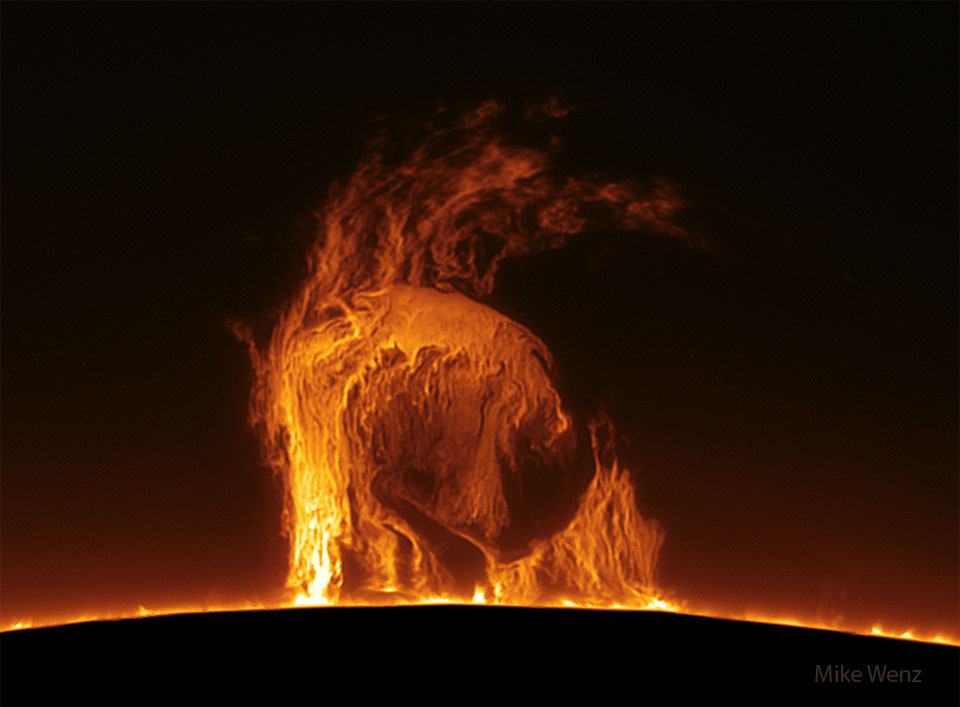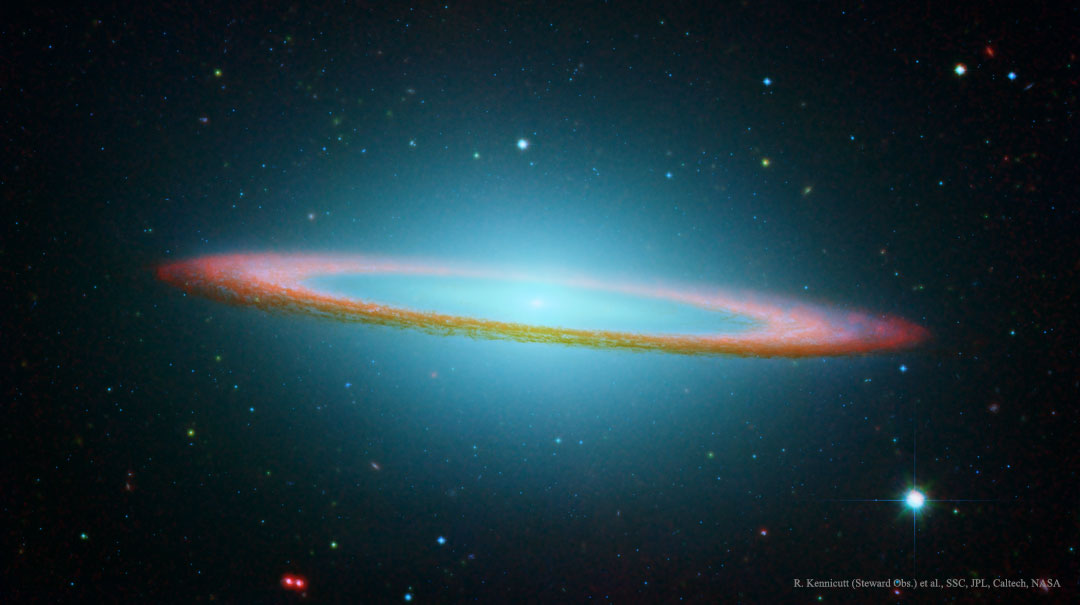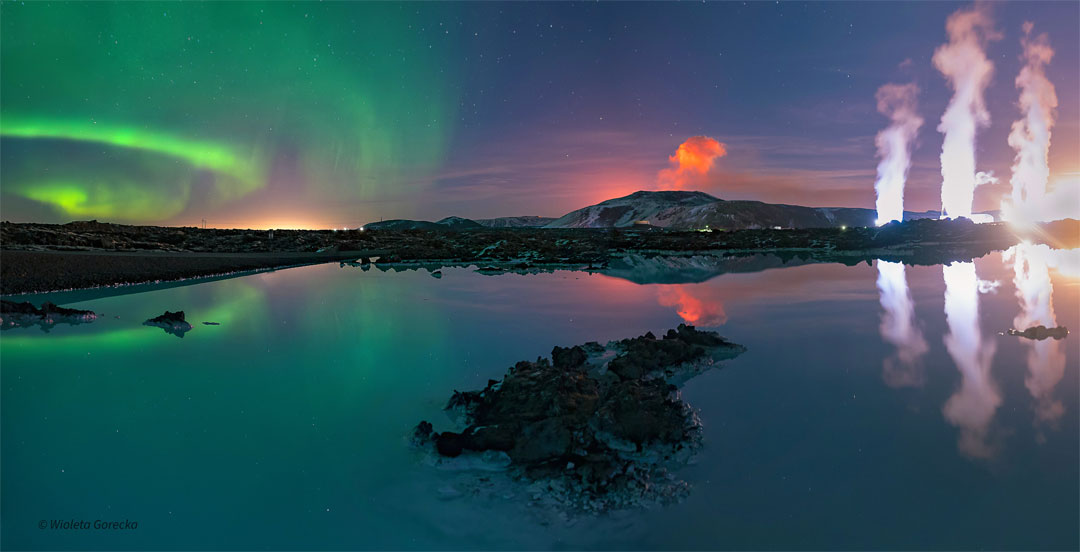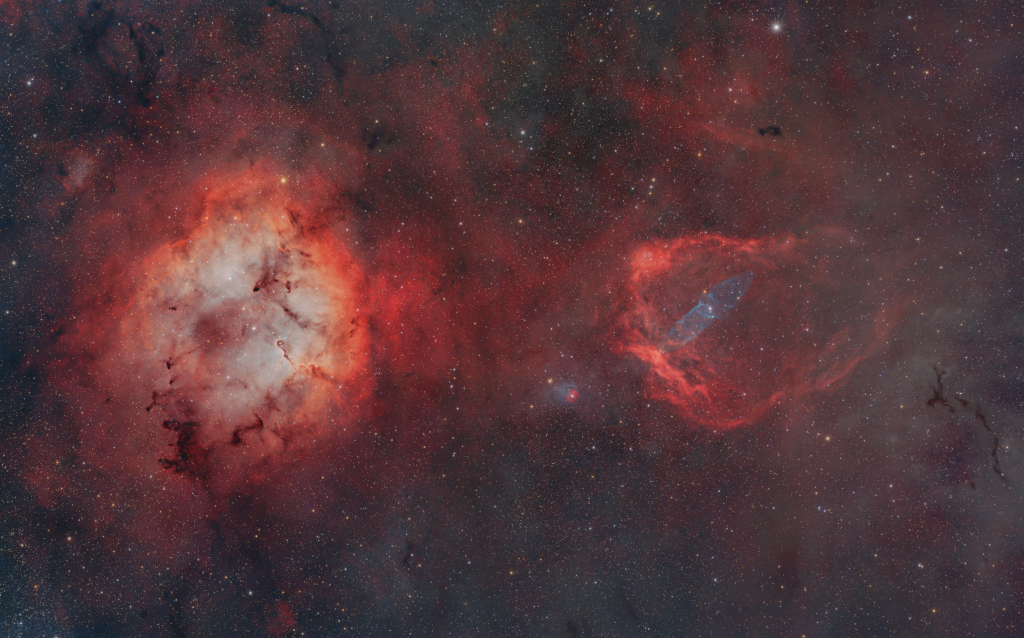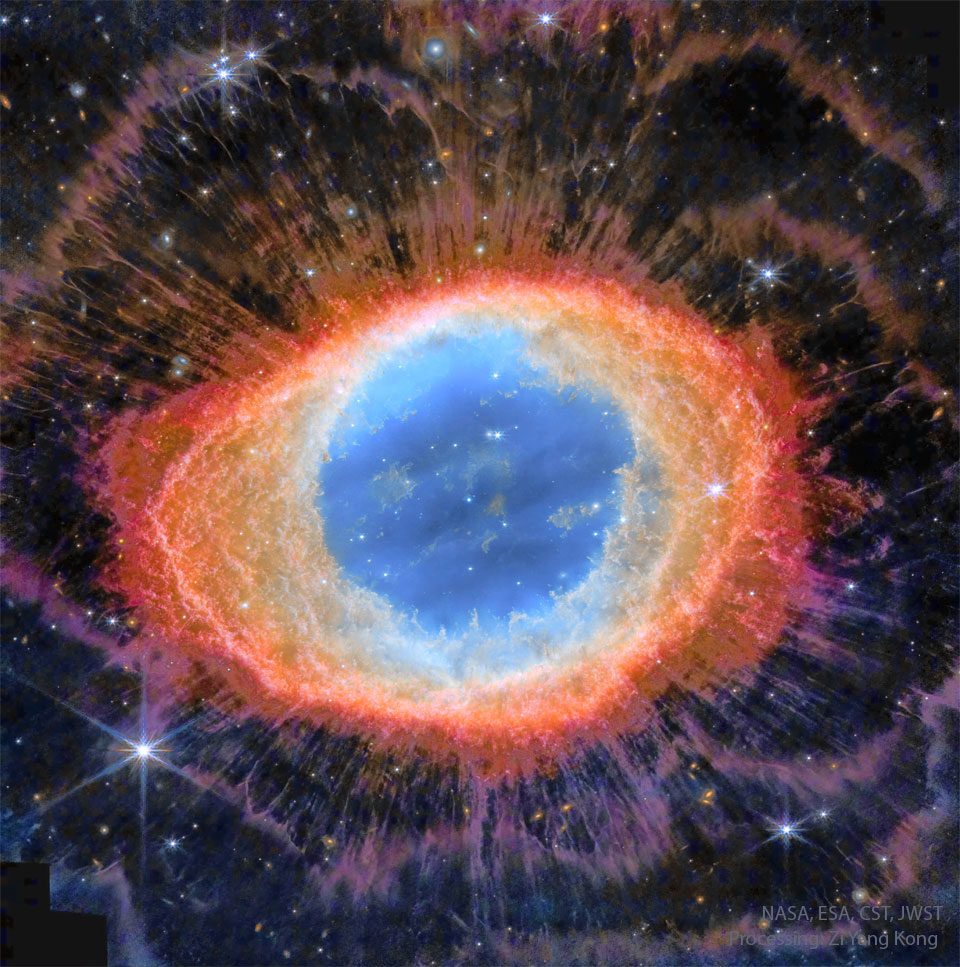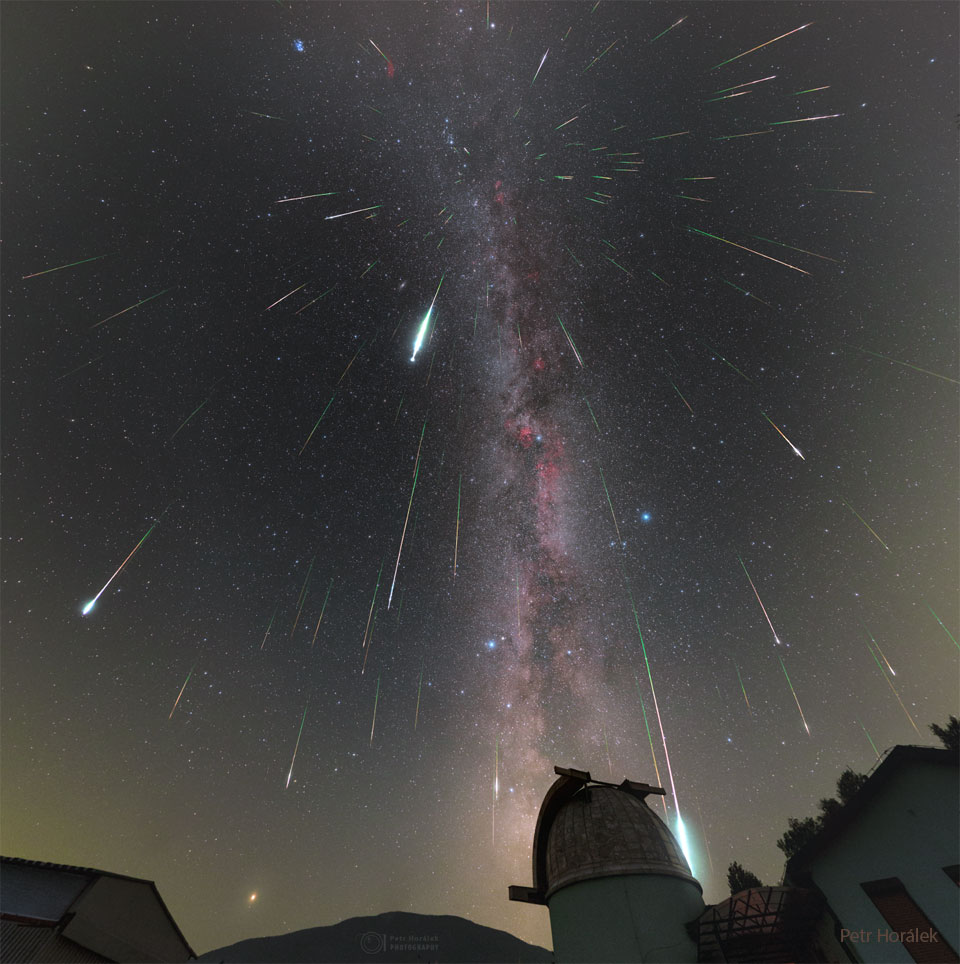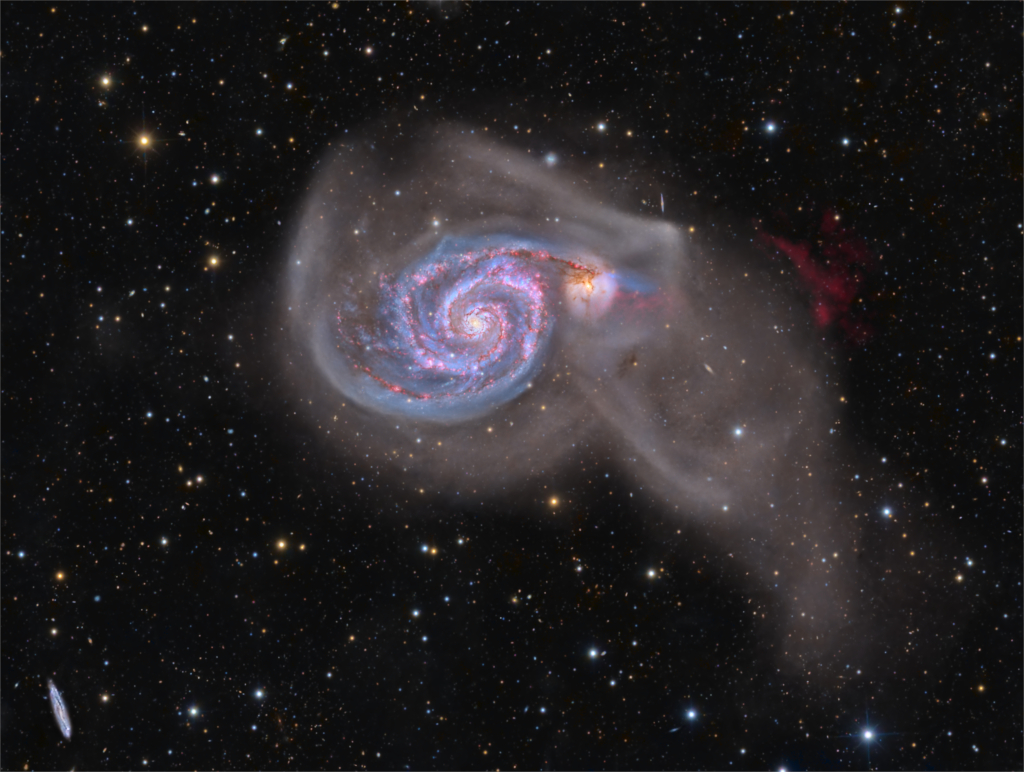Nombre total de pages vues
19/08/2023
PHOTOGRAPHIE ANIMAUX - Ourang-Outan grimpeur
ASTRONOMY - Monster Solar Prominence
2023 August 1
Image Credit & Copyright: Mike Wenz
Explanation: The monsters that live on the Sun are not like us. They are larger than the Earth and made of gas hotter than in any teapot. They have no eyes, but at times, many tentacles. They float. Usually, they slowly change shape and just fade back onto the Sun over about a month. Sometimes, though, they suddenly explode and unleash energetic particles into the Solar System that can attack the Earth. Pictured is a huge solar prominence imaged almost two weeks ago in the light of hydrogen. Captured by a small telescope in Gilbert, Arizona, USA, the monsteresque plume of gas was held aloft by the ever-present but ever-changing magnetic field near the surface of the Sun. Our active Sun continues to show an unusually high number of prominences, filaments, sunspots, and large active regions as solar maximum approaches in 2025.
18/08/2023
ASTRONOMY - The Sombrero Galaxy in Infrared
2023 August 13
Credit: R. Kennicutt (Steward Obs.) et al., SSC, JPL, Caltech, NASA
Explanation: This floating ring is the size of a galaxy. In fact, it is a galaxy -- or at least part of one: the photogenic Sombrero Galaxy, one of the largest galaxies in the nearby Virgo Cluster of Galaxies. The dark band of dust that obscures the mid-section of the Sombrero Galaxy in optical light actually glows brightly in infrared light. The featured image, digitally sharpened, shows the infrared glow, recently recorded by the orbiting Spitzer Space Telescope, superposed in false-color on an existing image taken by NASA's Hubble Space Telescope in visible light. The Sombrero Galaxy, also known as M104, spans about 50,000 light years across and lies 28 million light years away. M104 can be seen with a small telescope in the direction of the constellation Virgo.
ASTRONOMY - A Triply Glowing Night Sky over Iceland
2023 August 15
Credit & Copyright: Wioleta Gorecka; Text: Natalia Lewandowska (SUNY Oswego)
Explanation: The Sun is not the quiet place it seems. It expels an unsteady stream of energetic electrons and protons known as the solar wind. These charged particles deform the Earth's magnetosphere, change paths, and collide with atoms in Earth's atmosphere, causing the generation of light in auroras like that visible in green in the image left. Earth itself is also geologically active and covered with volcanoes. For example, Fagradalsfjall volcano in Iceland, seen emitting hot gas in orange near the image center. Iceland is one of the most geologically active places on Earth. On the far right is the Svartsengi geothermal power plant which creates the famous human-made Blue Lagoon, shown emitting white gas plumes. The featured composition therefore highlights three different sky phenomena, including both natural and human-made phenomena.
17/08/2023
ASTRONOMY - A Cosmic Zoo in Cepheus
2023 August 17
Image Credit & Copyright: Yann Sainty
Explanation: Sprawling emission nebulae IC 1396 and Sh2-129 mix glowing interstellar gas and dark dust clouds in this nearly 12 degree wide field of view toward the northern constellation Cepheus the King. Energized by its central star IC 1396 (left), is hundreds of light-years across and some 3,000 light-years distant. The nebula's intriguing dark shapes include a winding dark cloud popularly known as the Elephant's Trunk below and right of center. Tens of light-years long, it holds the raw material for star formation and is known to hide protostars within. Located a similar distance from planet Earth, the bright knots and swept back ridges of emission of Sh2-129 on the right suggest its popular name, the Flying Bat Nebula. Within the Flying Bat, the most recently recognized addition to this royal cosmic zoo is the faint bluish emission from Ou4, the Giant Squid Nebula. Near the lower right edge of the frame, the suggestive dark marking on the sky cataloged as Barnard 150 is also known as the dark Seahorse Nebula.
14/08/2023
ASTRONOMY - The Ring Nebula from Webb
2023 August 14
Credit: NASA, ESA, CSA, JWST; Processing: Zi Yang Kong
Explanation: The Ring Nebula (M57), is more complicated than it appears through a small telescope. The easily visible central ring is about one light-year across, but this remarkable exposure by the James Webb Space Telescope explores this popular nebula with a deep exposure in infrared light. Strings of gas, like eyelashes around a cosmic eye, become evident around the Ring in this digitally enhanced featured image in assigned colors. These long filaments may be caused by shadowing of knots of dense gas in the ring from energetic light emitted within. The Ring Nebula is an elongated planetary nebula, a type of gas cloud created when a Sun-like star evolves to throw off its outer atmosphere to become a white dwarf star. The central oval in the Ring Nebula lies about 2,500 light-years away toward the musical constellation Lyra.
12/08/2023
ASTRONOMY - Meteor Shower: Perseids from Perseus
2023 August 9
Credit & Copyright: Petr Horálek / Institute of Physics in Opava
Explanation: This is a good week to see meteors. Comet dust will rain down on planet Earth, streaking through dark skies during peak nights of the annual Perseid Meteor Shower. The featured composite image was taken during the 2018 Perseids from the Poloniny Dark Sky Park in Slovakia. The dome of the observatory in the foreground is on the grounds of Kolonica Observatory. Although the comet dust particles travel parallel to each other, the resulting shower meteors clearly seem to radiate from a single point on the sky in the eponymous constellation Perseus. The radiant effect is due to perspective, as the parallel tracks appear to converge at a distance, like train tracks. The Perseid Meteor Shower is expected to reach its highest peak on Saturday after midnight. Since a crescent Moon will rise only very late that night, cloudless skies will be darker than usual, making a high number of faint meteors potentially visible this year.
11/08/2023
ASTRONOMY - Messier 51 in 255 Hours
2023 August 11
Image Credit & Copyright: The Deep Sky Collective - Carl Björk,
Thomas Bähnck, Sebastian Donoso, Jake Gentillon, Antoine and Dalia Grelin, Stephen Guberski, Richard Hall,
Tino Heuberger, Jason Jacks, Paul Kent, Brian Meyers, William Ostling, Nicolas Puig, Tim Schaeffer, Felix Schöfbänker, Mikhail Vasilev
Explanation: An intriguing pair of interacting galaxies, M51 is the 51st entry in Charles Messier's famous catalog. Perhaps the original spiral nebula, the large galaxy with whirlpool-like spiral structure seen nearly face-on is also cataloged as NGC 5194. Its spiral arms and dust lanes sweep in front of a companion galaxy (right), NGC 5195. Some 31 million light-years distant, within the boundaries of the well-trained constellation Canes Venatici, M51 looks faint and fuzzy to the eye in direct telescopic views. But this remarkably deep image shows off stunning details of the galaxy pair's striking colors and extensive tidal debris. A collaboration of astro-imagers using telescopes on planet Earth combined over 10 days of exposure time to create this definitive galaxy portrait of M51. The image includes 118 hours of narrowband data that also reveals a vast glowing cloud of reddish ionized hydrogen gas discovered in the M51 system.
10/08/2023
GEMMOLOGIE - L’orthose, un minéral extraterrestre
ASTRONOMIE - Une boule de feu a enflammé le ciel de l'Australie et ce n'était pas une météorite !
ASTRONOMY - Orion and the Ocean of Storms
2025 December 13 Orion and the Ocean of Storms Image Credit: NASA , Artemis 1 Explanation: On December 5, 2022, a camera on board the u...

-
2022 September 26 All the Water on Planet Earth Illustration Credit: Jack Cook, Adam Nieman, Woods Hole Oceanographic Institution ; Data ...
-
2025 May 11 The Surface of Venus from Venera 14 Image Credit: Soviet Planetary Exploration Program , Venera 14 ; Processing & Copyri...

